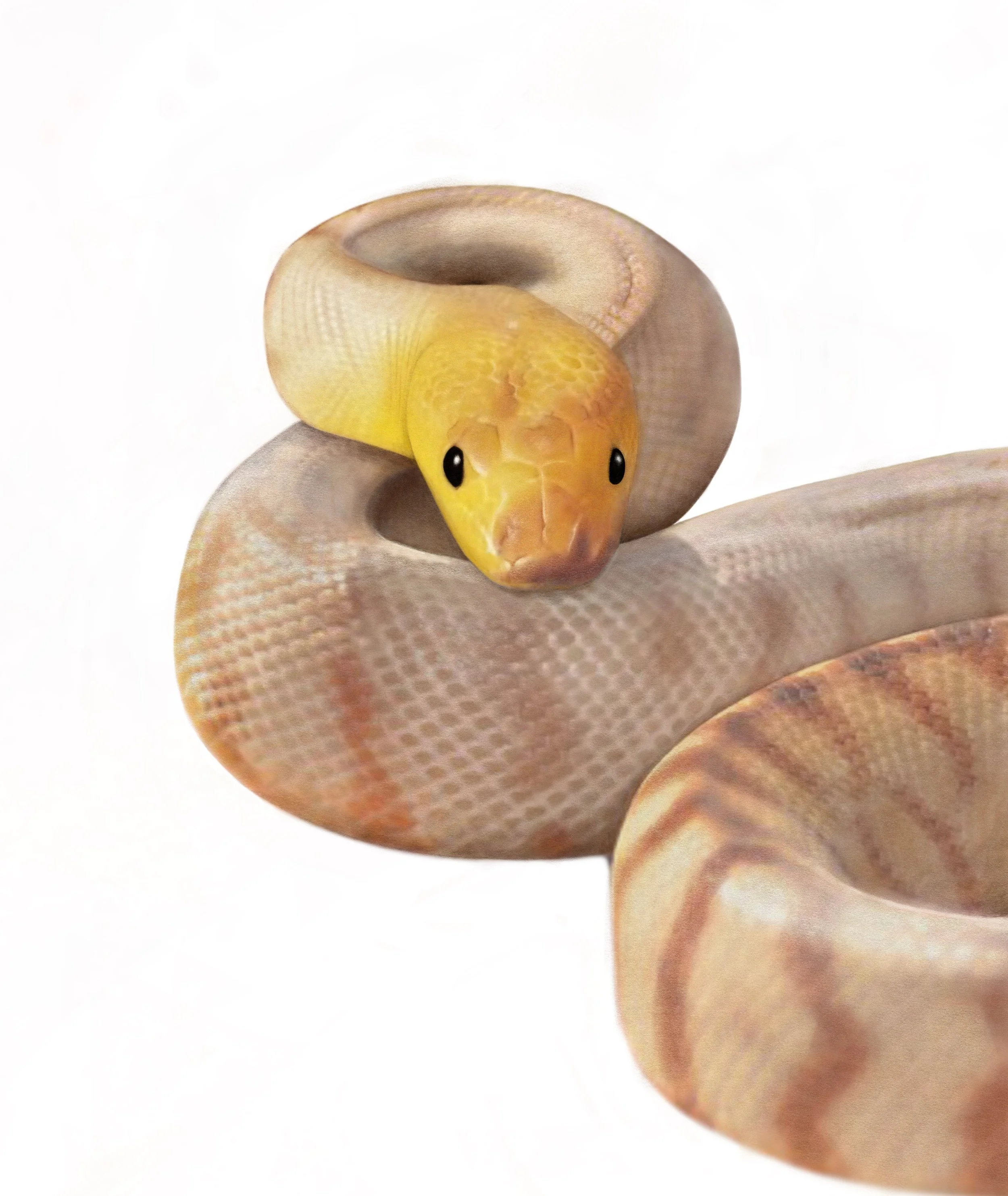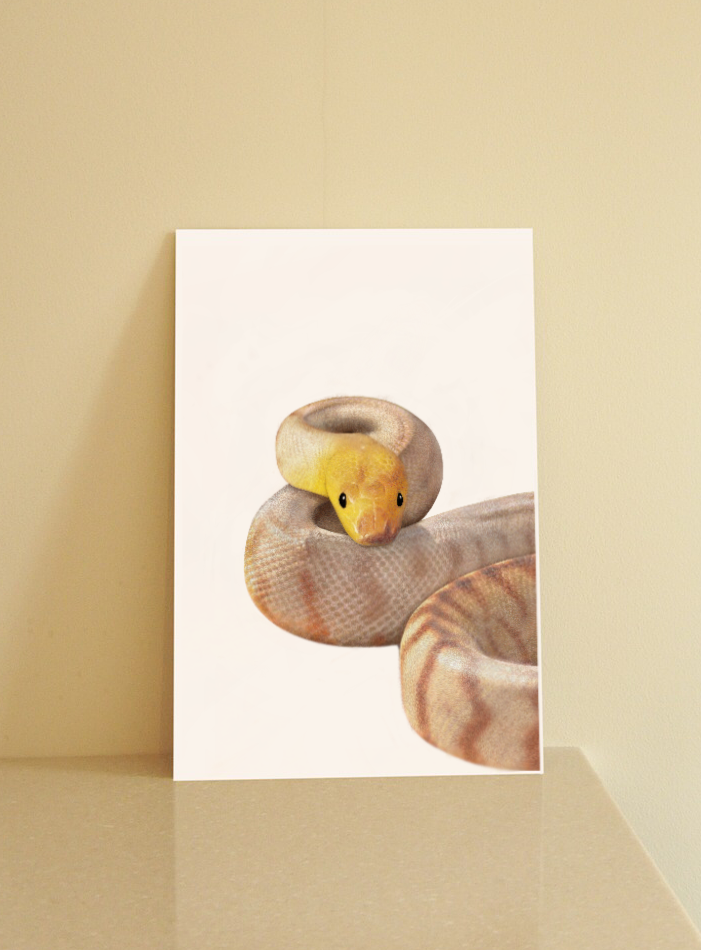WOMA PYTHON
Aspidites ramsayi
The Woma Python, scientifically known as Aspidites ramsayi, is a mesmerising snake species native to the arid regions of Australia. With its characteristic slender build and various striking patterns, the Woma Python embodies both beauty and stealth in its habitat. Renowned for its unique burrowing behaviour and efficient hunting techniques, this serpent plays a crucial role in maintaining the ecological balance of its environment.
OVERVIEW
IUCN Conservation Status: Least Concern (LC)
Classification Reptilia
Genus aspidities
Family Pythonidae
Order Squamata
HABITAT
Woma Pythons inhabit arid regions, favoring sandy deserts and scrublands for shelter and hunting.
BREEDING
Woma Pythons typically breed during the warmer months, with females laying clutches of around 6-15 eggs per season in underground burrows. After an incubation period of around two to three months, the juveniles emerge.
ENVIRONMENTAL ADAPTATION
Woma Pythons display remarkable adaptability by including venomous snakes in their diet. Their ability to consume potentially dangerous prey demonstrates their unique immunity to venom, and allows them to exploit a wider range of food sources in the barren regions they call home.
SIZE
Typical length of 1.2 to 1.8 meters (4 to 6 feet)
DIET
Woma Pythons have a varied diet consisting mainly of small mammals such as rodents and rabbits, and supplemented by birds and occasionally reptiles such as lizards. These pythons are ambush predators, patiently lying in wait for their prey to pass by. Once within striking distance, they use their powerful muscles to swiftly constrict and suffocate their prey before swallowing it whole.
BEHAVIOUR
The Woma Python is mostly active at night. During the day, it hides in hollow logs or under leaves. When moving across hot surfaces, it lifts its body and stretches forward, having only a few inches of its body touching the ground at a time.




